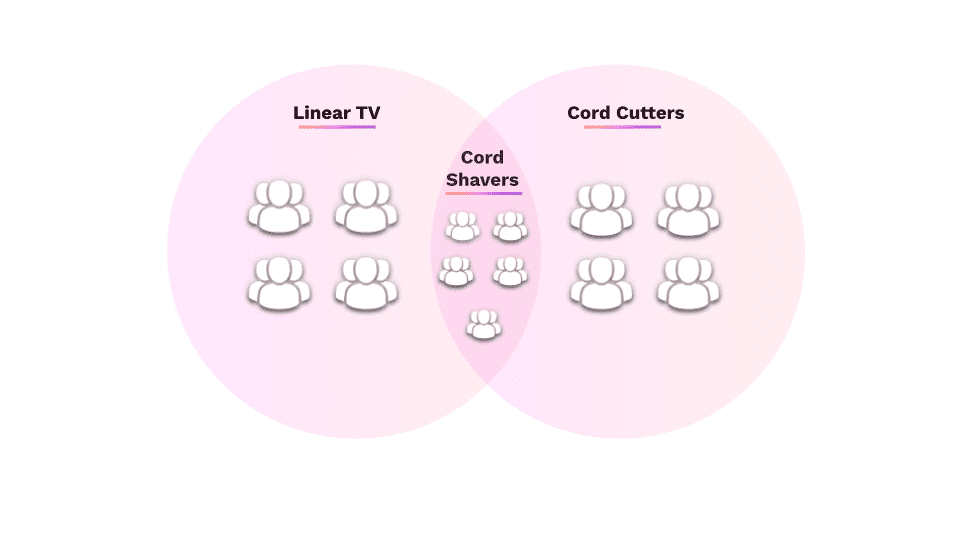You’ve likely heard of streaming video, Connected TV, and OTT. You are also very likely to use them, too! But, what’s the difference? And how do they differ from linear TV?
When it comes to TV advertising, there are so many options that could fit the needs of your campaign. The trick is to use them in the right way. Keep reading to learn about Over-the-Top Television (OTT) and understand how to make it work for you—and grow your business as a result.
What is OTT?
Over-the-Top is a video avenue that can leverage streaming services (Hulu, FuboTV, Spectrum, etc.) across any device, including TV, Desktop, Tablet, and mobile. You’ll often hear CTV and OTT used interchangeably, so you can assume that in most cases, they are the same thing. If we want to get technical (which we do a lot around here), CTV is a type of OTT advertising. CTV is a device where OTT can be delivered. So, think about your smart TVs. Any time you use an app on your actual TV, you are using a Connected TV!
As consumers become more fragmented in where and how they consume video content, OTT is becoming an even more critical component of a marketer’s overall media mix. In fact—in the span of one year alone—the OTT ad impression share increased by 178%. This is a number we shouldn’t ignore.
TV Landscape
Taking a step back, we can group consumers into three primary categories for video consumption: Linear TV, Cord Cutters, and Cord Shavers. Let’s dive into each of these to understand OTT’s role and how it can complement more traditional efforts.
- Linear-TV represents the consumer who continues to receive their video content through satellite, antenna, or set-top-boxes (cable box) delivered directly onto their TV. This category represents the traditional TV viewer— the non-streamers.
- Cord Cutters access video content through various devices and digital services. This category of consumers will rarely be reached using Linear TV.
- Cord Shavers can be viewed as the perfect blend of both Linear TV and Cord Cutter audiences. This consumer likely accesses their content through a set-top box or a streaming service that their local cable provider offers them with their subscription.

OTT Can Improve Your Media Mix
We often talk about having a healthy media mix for your campaign, and it’s no different when you’re working with TV. It’s important to remember that if the only TV channel leveraged in your media mix is Linear TV, you’re likely missing out on over 33% of your potential audience. Aside from overlooking this large number of prospective consumers, you’re also only scratching the surface on the ability to accurately target based on behaviors, rather than general demographics.
Linear TV can target down to the market level, and it can hit the correct demographics (Household Income, Age and Gender) based on the programming schedule. However, it can’t deliver against particular consumer behaviors from third-party and first-party data.
This lack of targetability is where OTT becomes a pivotal player in your overall media mix. For example, if you are a mattress company and you want to target people who are in-market for mattresses, you could do this with OTT with this type of segmentation:
- Previous search history
- Competitive Conquesting other Mattress brands
- People actively visiting showrooms,
- Consumers who have not purchased a bed in 7+ years
If campaign parameters allow, we suggest using Linear TV for cost-effective reach into a market blended with OTT to stretch that reach and hit your potential Cord Cutter audience. This allows you to build frequency of the message to that same audience for those in the market for a mattress. Linear TV acts as the influential factor in pushing your audience to buy a bed, and OTT drives home that your brand should be the one they consider most for purchasing a mattress once in the market.
Evidence for pairing OTT with Linear TV is growing. Many predict that over the next five years, OTT will continue to gain large amounts of impressions, with the potential to catch up to or even surpass Linear TV. Not only are OTT households expected to grow by 82% by 2023, but cord-cutters and cord-never households are also expected to increase to 44% of the population during the same period—largely accelerated by the pandemic.
If you need more convincing, let us know what questions you have about adding OTT to your media mix! We can pinpoint which types of TV are right for you.


